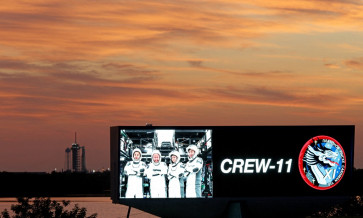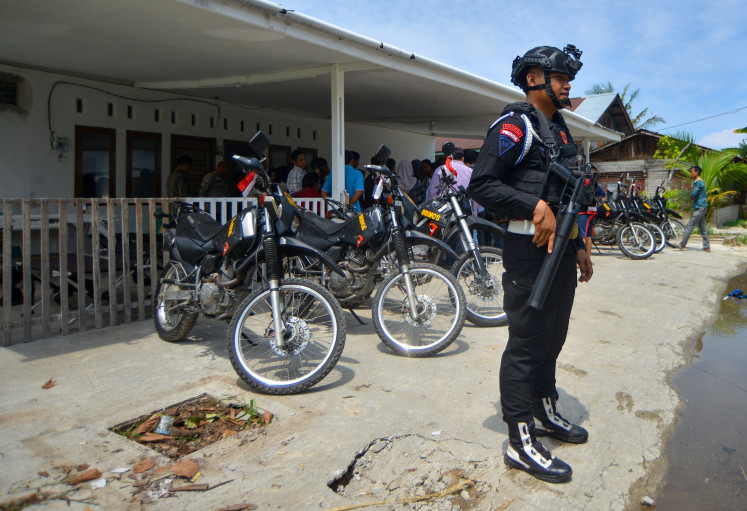Popular Reads
Top Results
Can't find what you're looking for?
View all search resultsPopular Reads
Top Results
Can't find what you're looking for?
View all search resultsMutants: Creating superhumans, curing the incurable
âLogic will get you from A to B
Change text size
Gift Premium Articles
to Anyone
'Logic will get you from A to B. Imagination will take you everywhere.' Thus said Albert Einstein.
Peter Parker, the children's comic-book hero, was an ordinary student who could one day climb skyscrapers as the result of an accidental genetic mutation from a spider-bite.
Apparently, this Spiderman-like story is not a brand new thing. For a long time, mythology and folklore has told children around the world about centaurs, 'half horse half man' creatures, or mermaids, the 'half fish half woman' creatures of the sea.
___________________________________
People who support these mutation projects are hoping to cure genetic diseases.
This raises the question: do these stories tell fiction or do they adumbrate something that is potentially real?
The human body comprises millions of pieces of genetic information, neatly stored in 46 chromosomes. This information is sometimes deleted or added. These mistakes are called gene mutations. As a result, our bodies can be disordered or catch diseases.
Some diseases are believed to be the direct result of mutation, such as cancer. In fact, cancer is only one of thousands of genetic diseases. Some other examples of genetic disorders include down syndrome; a syndrome that is marked by a low IQ, epidermolysis bullosa; a skin disorder that is marked by reddish and unpleasant skin, Duchenne muscular dystrophy; which results in muscular degeneration and premature death. Even common diseases, such as diabetes mellitus, are linked to genetic mutations.
These diseases have often acted as serious obstacles to the happiness and prosperity of the affected person and his or her family because there are at present no effective treatments available. Gene replacement therapy is one promising treatment that is predicted to become a treatment of choice in the future.
With scientific development, especially in genetics, synthetic biology and medicine, this technology is set to become more and more possible. In last decade, some genetic tools have developed to accelerate the technology. Scientists in this field are now aware of enzymatic protein or ribonucleic acid (RNA).
These things are nuclease that can help locate and mutate a specific gene. These nucleases protein are usually combined with other proteins to create more specific mutations.
So, what about these tools? Are scientists actually creating Spiderman? An article published in Bloomberg a few weeks ago mentioned that some genetics companies, such as Amgen, were actually doing some cutting-edge research. They have found a gene that is correlated with pain and bone density disorder.
They've realized the power behind the natural gift of mutation and they have tried to modify those genes into drugs. The same article mentioned that the research may one day be worth some $2 billion per year.
As a matter of fact, hundreds of laboratories around the world are creating things to help cure genetic diseases. Sangamo Biosciences, a life science company, led a promising clinical trial attempting to engineer a specific mutation of the CCR5 gene that possibly work against the human immunodeficiency virus (HIV) disease. A similar study on curing HIV by a Harvard group led by Cowan and Rossi showed that the tools were very promising, effective and specific.
As technology develops, there are certainly pros and cons. People who support these mutation projects are hoping to cure genetic diseases. On the other hand, people who are against this research have strong opinions about the ethics of creating something that is beyond God's creation.
Ethicists are also concerned about the possible construction of a human race divided between superhumans and ordinary humans, and the political and moral ramifications of this development.
To conclude, the human body is a storage facility for genetic information. Every activity in the body is maintained by a gene. With advanced technology, creating an unwanted creature is not very difficult.
However, to cure every disease in the world is a noble choice.
______________________________
The writer holds a Masters degree in research in stem cells and regenerative medicine.










